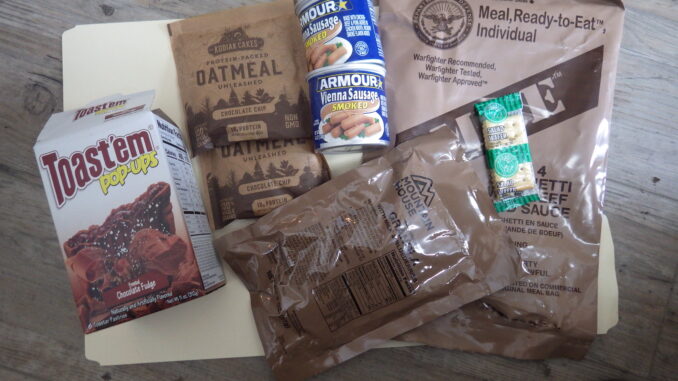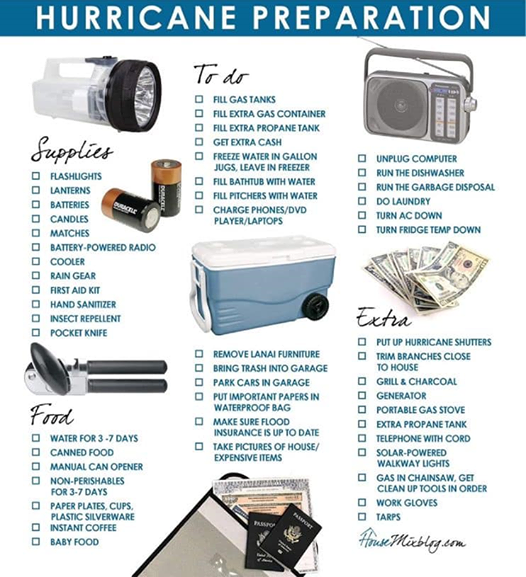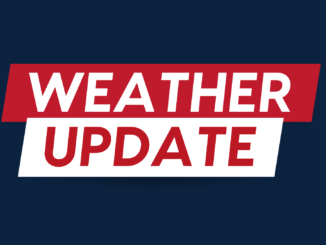
Every pay period, (based on a two-week pay period) we are suggesting items to pick up for your emergency kit in the event of a hurricane. By now you should have your water-tight tote.
This pay period we are suggesting you purchase a whistle – yes, a whistle, like a sport referee whistle. This is in case you need to signal for help. First responders will hear the whistle.
Last pay period we suggested you purchase a battery-powered or hand-crank radio. The little radios are available from local discount stores. Purchase your batteries to make certain the radio works. As we go further into hurricane season, we will ask you purchase extra batteries for your Emergency Supply Kit.
So, here’s your checklist thus far:
A water-tight storage container with a lid
A first aid kit
A battery powered radio or a hand crank radio.
A whistle.
One to three gallons of water per day, per person (minimum)
Tools including pliers, scissors, Phillips and flat screwdrivers, boxcutter or sharp pocketknife, clawhammer and can containing small packages of fasteners.
The old joke about stocking up on milk, bread and eggs for an emergency always has the inevitable answer – what are you going to do, survive off of French toast?
Food can be a comfort as well as fuel for your body during an emergency. You need good nutrition to combat fatigue and stress. At the same time, those with sensitive stomachs need to be able to eat without worrying about getting sick.
Food is bulky, however – too many cans will rip the bottom out of even the stoutest emergency bin. Some experts suggest keeping a “hurricane shelf” of foods that are not to be opened unless there’s an emergency. They can then be dropped into your hurricane bin or other container if you need to evacuate.
Food that doesn’t need to be cooked is a bonus when the lights are out and a grill or campfire is impractical. What are the standard snacks at your house? Trail mix is better than candy bars, and quality dried fruit is jampacked with nutritional value, unlike snack cakes and cookies. At the same time, “comfort foods” have a place in the preparedness kit. A familiar type of cookie can make a big difference to a frightened child or worried parent. Shelf life on these items, however, means they are best left to a “last minute” purchase.
Eventually, however, you’re going to need more than snacks. Again, see what’s in your cupboard and refrigerator, and look for long-term storage versions of the same thing. Be careful of the amount of sodium and preservatives, however, especially if someone in your home has blood pressure issues.
Keeping your freezer and refrigerator shut even after the power goes off, can keep much of your food safe for up to three days. Start out with what is in your refrigerator, then move on to the freezer before you delve into your stash of long-term storage food products. Your meals may end up being a bit eclectic – bologna sandwiches, green beans and corn, for example — but that’s better than letting your food and money go to waste.
Military, commercial and Homeland Security versions of the venerable MRE meal have their own heating unit. Those heaters only work with the pre-packaged emergency meals, however. You need a plan for preparing your family’s meals when the time comes.
If you have coffee or hot tea drinkers in your house, make sure you have a supply of loose grounds or tea bags, as well as a pot that’s safe for making coffee the old fashioned way.
Practice your emergency cooking skills
While grilling is a popular way to prepare everyday meals, do you have the skills to cook vegetables and sides on your grill? Do you have pots and pans suitable for outdoor use? And can you safely stockpile enough propane, charcoal or wood for up to a week’s service, two or three meals per day?
A big part of preparation is practice. Try your hand at a few “emergency” meals before the next true emergency arrives. Cooking over coals from an open fire or on a gas camp stove is entirely different from your modern kitchen. Make sure you have at least a fire extinguisher handy in case of an emergency.
There’s always a place for canned meat such as Spam, Treet or Vienna sausages in your hurricane bin, as well as pork and beans and other traditional emergency foods. But five to seven days worth of meals – that’s 15 to 21 meals – don’t need to be restricted to the same old cans left over from a camping trip.
Take some time to figure out how you are going to cook and what you can cook when there’s no power, and make your hurricane meals a little healthier and more creative. Planning ahead makes it easier to focus on the problems at hand when and if there is an emergency.
This list is updated every week. It’s based on a plan that was developed by Pender County Emergency Management to help people prepare for hurricanes, but it’s applicable for any emergency situation.
Some folks like to buy a few items every week, or every pay period. Set up a plan of your own, and use this as a checklist.



























